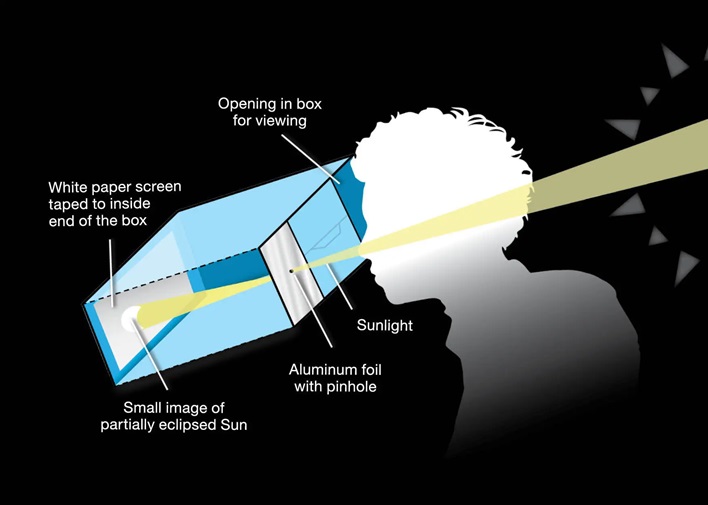A Spectacular Solar Eclipse Is Coming, Here’s How To Protect Your Eyes
According to NASA, a total solar eclipse happens when the Moon passes between the Sun and Earth, completely blocking the luminous glow of the Sun. When this occurs, the sky will darken as though it were dawn or dusk. For those viewing the event, it is not safe to look directly at the Sun, except during the momentary total phase of the total eclipse, without using specialized eye protection, often referred to as eclipse glasses or solar viewers. Regular sunglasses won't do, and neither will squinting.

It is important to note, eclipse glasses are not regular sunglasses, no matter how dark they may be. These specialized glasses are thousands of times darker than a regular pair of sunglasses, and need to comply with the ISO 12312-2 international standard. It is also important to check a pair of eclipse glasses for any tears, scratches, or other damage to ensure total eye protection. Otherwise, you risk permanently damaging your eyes and eyesight.
“Solar filters that provide safe, comfortable, unmagnified views of the Sun generally transmit between 1 part in 100,000 (0.001%) and 1 part in 2,000,000 (0.00005%) of its visible light,” remarked Rick Fienberg, Project Manager of the AAS Solar Eclipse Task Force. “Such filters are at least 1,000 times darker than even the darkest sunglasses.”
Buyers can tell if a pair of eclipse meet the International Organization for Standardization (ISO) by making sure the glasses have proper documentation. According to the American Astronomical Society, proper documentation means that a manufacturer provides a report showing compliance with ISO 12312-2 based on tests conducted at an accredited laboratory conducted with specialized equipment.

Example of a pinhole projector.
NASA also warns against viewing the eclipse through a camera lens, telescope, binoculars, or any other optical device while wearing eclipse glasses, as the concentrated solar rays will burn through the filter and cause serious eye injury. The space agency says that a pinhole projector, which has a small opening and projects an image of the Sun onto a nearby device, but warns against looking at the Sun directly through the pinhole.
The bottom line is that anyone wishing to safely view the upcoming total solar eclipse needs to take proper precautions to safeguard their eyes. For those wanting to be absolutely sure they are buying certified eclipse glasses, the American Astronomical Society has a list of suppliers of safe solar viewers and filters on its webpage. We HIGHLY recommend sourcing your eye protection from those vendors, rather than trying your luck with, say, a marketplace seller.


